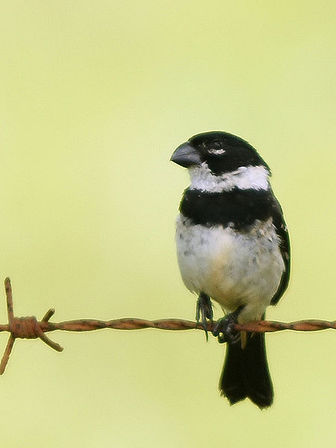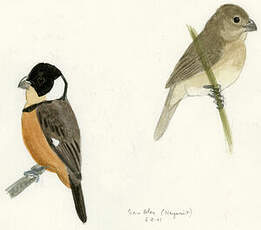

the Valle de Oaxaca and nearly highlands.The various strategies for this region will use all – or part – of the following: Other non-endemic birds of interest better seen in this region include: Least and Black Storm-Petrels, Galapagos Shearwater, White-bellied Chachalaca, Singing Quail, White-faced Quail-Dove, Pheasant Cuckoo, Lesser Ground-Cuckoo, Striped Owl, Spot-tailed Nightjar, Great Swallow-tailed Swift, Green-breasted Mango, Garnet-throated & White-striped Hummingbirds, Ruddy Foliage-gleaner, Rufous-breasted Spinetail, Gray-collared Becard, Chestnut-sided & Green Shrike-Vireos, Unicolored & Azure-hooded Jays, Slate-colored Solitaire, and Cinnamon-bellied Flowerpiercer. SHARED-REGION ENDEMIC BIRDS regularly found on this route include: WEST MEXICAN CHACHALACA, LONG-TAILED WOOD-PARTRIDGE, LILAC-CROWNED PARROT, COLIMA PYGMY-OWL, MEXICAN HERMIT, CURVE-WINGED SABREWING, GOLDEN-CROWNED EMERALD, BUMBLEBEE, GREEN-FRONTED, & DOUBLEDAY’S HUMMINGBIRDS, GOLDEN-CHEEKED & GRAY-CROWNED WOODPECKERS, WAGLER’S TOUCANET, CITEROLINE TROGON, PILEATED & FLAMMULATED FLYCATCHERS, WHITE-THROATED JAY, SLATY VIREO, GRAY-BARRED, SCLATER’S, BOUCARD’S, & HAPPY WRENS, RUSSET NIGHTINGALE-THRUSH, RUFOUS-BACKED ROBIN, BLUE MOCKINGBIRD, RED WARBLER, HOODED YELLOWTHROAT, RED-BREASTED CHAT, RED-HEADED TANAGER, CINNAMON-RUMPED SEEDEATER, RUFOUS-CAPPED BRUSH-FINCH, COLLARED TOWHEE, DICKEY’S ORIOLE (I. LONG-TAILED SABREWING, GRAY-BREASTED WOODPECKER, DWARF VIREO, DWARF JAY, GIANT, RUFOUS-NAPED, SUMICHRAST’S, & NAVA’S WRENS, AZTEC THURSH, OCELLATED THRASHER, WHITE-NAPED BRUSH-FINCH, WHITE-THROATED TOWHEE, BRIDLED, CINNAMON-TAILED, & OAXACA SPARROWS, OCHRE ORIOLE, AND ROSE BELLIED-BUNTING. [these two options can also be run in reverse order, ending in Oaxaca City.Įndemic MUST-SEE BIRDS of this region include: TOWNSEND’S SHEARWATER (fall/winter), TUXTLA QUAIL-DOVE, GREEN-FRONTED, CINNAMON-SIDED, BLUE-CAPPED, & BEAUTIFUL HUMMINGBIRDS.

This complex birding route has several ‘good’ options including: (1) an extended circle that requires beginning and ending in Oaxaca City (2) a linear route that begins in Oaxaca City and ends in EITHER Veracruz or Tuxtla Gutierrez, Chiapas. The international airport of Oaxaca City serves this region.


 0 kommentar(er)
0 kommentar(er)
